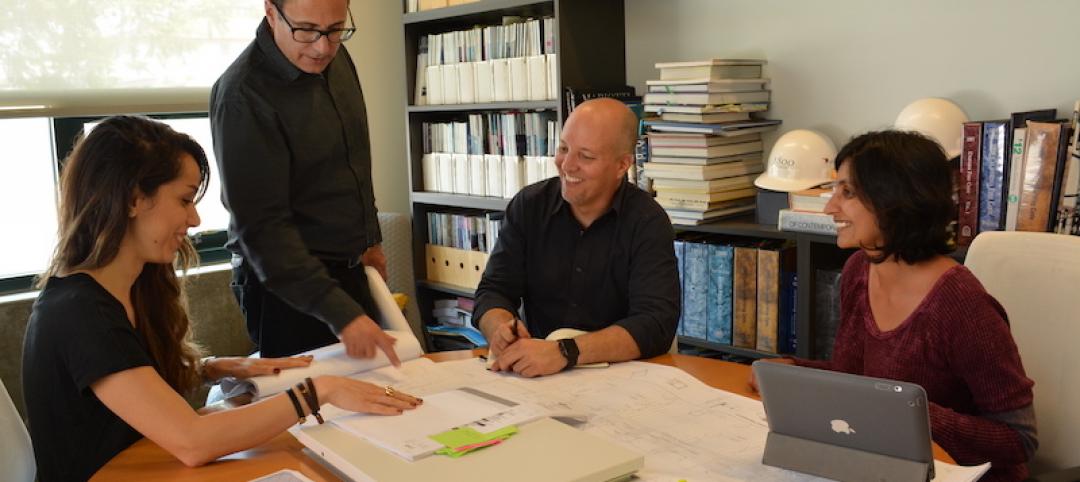The American Institute of Steel Construction (AISC) is working to bring that vision to reality by developing a three-step interoperability strategy to evaluate data exchanges and integrate structural steel information into buildingSMART's Industry Foundation Classes (IFC). IFC is an open and neutral data exchange format that covers multiple disciplines across the construction industry.
AISC has been at the forefront of advancing interoperability through open standards since adopting the CIMSteel Integration Standard (CIS/2) in 1998 as an open standard for the structural steel industry. Since then, however, the landscape of software interoperability and integration has changed dramatically and even after a decade of progress, the issue is not solved. In addition, CIS/2's "steel-only" format has meant that other solutions were needed as other disciplines began demanding data exchange.
These cumulative changes have led to AISC's new strategy to advance interoperability across the construction industry: assess and enhance data exchanges available today and integrate that knowledge into IFC, a common data schema that makes it possible to hold and exchange data between different proprietary software applications. Although IFC has yet to address some details of a building's life cycle, and does not yet cover the depth of data that CIS/2 encompasses, the IFC schema aspires to cover every aspect of design, procurement, manufacture and assembly, and operations and maintenance.
Acknowledging that raising IFC to the level required by the structural steel industry will take time, AISC has adopted a three-part strategy, outlined as follows:
- Short term: Ensure model data can be exchanged as needed by the structural steel industry, regardless of the nature of the exchange or format used
- Medium term: Promote IFC and make the format more accessible and understood by working with buildingSMART, other trade organizations, academia and subject experts.
- Long term: Facilitate the development and implementation of IFC to satisfy the needs of the structural steel industry.
This new strategy maintains AISC and the structural steel industry's leadership in interoperability and ensures that data related to structural steel can be exchanged up and down the supply chain and with other disciplines and trades. AISC holds the view that open standards will never be able to transfer every piece of data a user or client may want, or indeed that two software programs could exchange.
"A combination of open standard and proprietary enhancement will always be state of the art, but the key is to always be raising the quality of data exchanged within the open format," commented Chris Moor, AISC director of industry initiatives. "To that end, this overall strategy feeds itself: The short term strategy is an ongoing effort and takes advantage of the myriad of exchanges available, now or in the future, documenting them and learning from them - what data is exchanged and why. This information then forms the basis of long term goals to develop and implement IFC to a very high standard, raising the bar once more for open standards."
Added Deke Smith, executive director of the buildingSMART alliance, "I look at AISC as the gold standard for associations. AISC is implementing the profound changes necessary to transform the industry as a service to the constituents they represent. If all the market sectors had organizations representing them with this level of understanding and dedication to getting the job of interoperability done we would see a far more effective construction industry in the United States, one that was more competitive internationally."
More information about the evolution of interoperability and AISC's novel approach to moving it forward can be found in the Fall 2011 issue of the Journal of Building Information Modeling (JBIM), available for free downloading at http://www.wbdg.org/references/jbim.php. A copy of the article is also available on AISC's website, here. BD+C
Related Stories
Industry Research | Apr 9, 2021
BD+C exclusive research: What building owners want from AEC firms
BD+C’s first-ever owners’ survey finds them focused on improving buildings’ performance for higher investment returns.
Architects | Apr 2, 2021
Spring Has Sprung at Construction Specialties
Introducing a slew of sensational solids, metallic finishes that cast subtle and shimmering effects, and disposable curtains to complement our exclusive fabric line.
Multifamily Housing | Mar 30, 2021
Bipartisan ‘YIMBY’ bill would provide $1.5B in grants to spur new housing
Resources for local leaders to overcome obstacles such as density-unfriendly or discriminatory zoning.
Office Buildings | Mar 26, 2021
Finding success for downtown office space after COVID-19
Using the right planning tools can spur new uses for Class B and C commercial real estate.
Architects | Mar 25, 2021
The Weekly Show, March 25, 2021: The Just Label for AEC firms, and Perkins Eastman's Well-Platinum design studio
This week on The Weekly show, BD+C editors speak with AEC industry leaders about the Just Label from the International Living Future Institute, and the features and amenities at Perkins Eastman's Well Platinum-certified design studio.
Architects | Mar 23, 2021
Design firms KTGY, Simeone Deary Design Group unite to shape future of architectural design through experiential environments
With a bold vision to reshape how people experience spaces, residential design firm joins forces with interior design group, creating fully integrated architecture, branding, interiors and planning practice.
Architects | Mar 15, 2021
A life in architecture – Lessons from my father
A veteran designer looks back on the lessons his father, a contractor, taught him.
Architects | Mar 11, 2021
Calling all building design professionals: BD+C needs your expertise on design innovation in 2021
This new BD+C research project explores the leading drivers, sources of inspiration, and successful outcomes for design innovation projects and initiatives.
Coronavirus | Mar 11, 2021
The Weekly show, March 11, 2021: 5 building products for COVID-related conditions, and AI for MEP design
This week on The Weekly show, BD+C editors speak with AEC industry leaders about building products and systems that support COVID-related conditions, and an AI tool that automates the design of MEP systems.

















